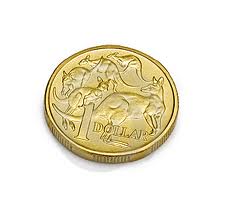
Jonathon Shapiro is one of the AFR’s better journalists. But today’s op-ed on the implications of a high dollar is not among his best work. In fact, the piece is so limited in its scope that it makes me wonder what kind of discussions transpire at the national business paper about the currency and why:
A high currency places severe limitations on the ability of the central bank to move rates upwards. If the RBA talks up the economy, signals that it may raise rates, or actually increases them, that could increase the yield on Australian dollar bonds, luring more funds to the market and pushing the exchange rate higher. This would compound the pressure on export-dependent sectors.
OK, that summarises the problem well enough. What does Shapiro offer as solutions?
While there is an increased sense that business leaders and policy-makers are coming to terms with the elevated currency, it is still a major headache for the central bank, adding unwanted complexity to the monetary policy process and clouding a highly uncertain transition of the economy to its post-mining investment boom future.
…Is there any way the Australian dollar will fall? The conditions that have led sovereign wealth funds and central bank reserve managers to buy Australian dollars – low global rates, hyperbolic money creation and European uncertainty – are still in place. Yields on safe-haven assets, such as US treasuries, or German bunds, are still lingering at unattractively low levels.
That means there are still plenty of reasons why the Australian dollar could remain high – and why, if the impact of the exchange rate persists or worsens, the RBA might need to buy off one of its rate cut bullets to stem the tide.
That’s it. Just a motherhood statement that our elite is coming to terms with a high dollar. How exactly? By ignoring it? No discussion of alternative measures. No discussion of the pointed lack of discussion of alternative measures? Yet highly credible folk are shopping alternative ideas around:
- former RBA board member, widely admired economist and occasional AFR commentator, Warwick Mckibbin, has argued that the RBA could print money for the portfolio flows that Shapiro blames for the high dollar
- former head of RBA research, Peter Jonson has argued capital controls on hot money flows can liberate the dollar from interest rates
- MB itself has argued both, as well as put the case for macroprudential policy to break the link between credit growth and the dollar
These policies are being enacted all over the world as we speak. They are neither radical nor from the lunatic fringe. They are a part of the new normal of monetary policy tools. Why on earth ignore them?
It serves absolutely nobody’s interests to hide this discussion in plain sight.

